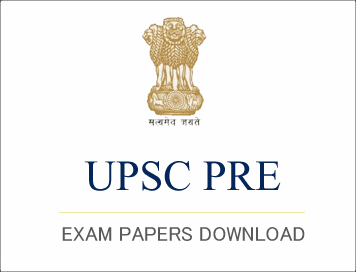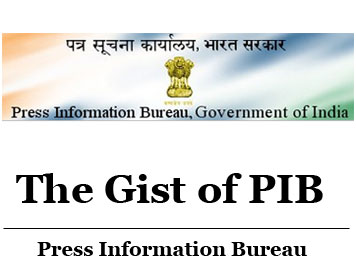
UPSC IAS Prelims 2020
CSAT Question Paper-2
UPSC Prelims 2020 CSAT Paper 2 Answer Key:
Directions for the following 6 (six) items:
Read the following five passages and answer the items that follow. Your answers to these items should be based on the passages only.
Passage—1
In India, over the last decade or so, labour has been departing agriculture, but is only going to construction and unregistered manufacturing which are not markedly better jobs. Services, where labour tends to be most productive, are not generating the additional jobs the country needs. India will need 24 million or so jobs over the next decade. The new sector, e-commerce, can at best close only half the jobs gap. Only those sectors that drive domestic demand such as health and education can comfortably fill the other half.
1. Which one of the following is best Implied in the passage?
(a) Strong measures need to be taken to reduce the rural to urban migration of labour.
(b) The working condition in construction and unregistered manufacturing needs to be improved.
(c) service sector has been reducing the problem of unemployment.
(d) Increased social sector spending is imperative for large-scale job creation.
Passage-2
In India, the current focus on the right to privacy is based on some new realities of the digital age. A right is a substantive right only if it works in all situations, and for everyone. A right to free expression for an individual about her exploitation, for instance, is meaningless without actual availability of security that guarantees that private force cannot be used to thwart this right. The role of the State, therefore, is not just to abstain from preventing rightful free expression, but also to actively ensure that private parties are not able to block it.
1. On the basis of the above passage, the following assumptions have been made:
2. State should have some institutions to ensure its appropriate role in a digital society.
3. State should ensure that private parties do not violate the citizens' right to privacy.
4. Digital economy is not compatible with the idea of not violating the citizens’ privacy.
2. Which of the above assumptions is/are valid?
(a) 1 and 2
(b) 3 Only
(c) 1 and 3
(d) 2 only
Passage—3
One of the biggest ironies around water is that it comes from rivers and other wetlands. Yet it is seen as divorced from them. While water is used as a resource, public policy does not always grasp that it is a part of the natural ecosystem. Efforts at engineering water systems are thus efforts at augmenting water supply rather than strengthening the capacities of ecological systems.
3. Which one of the following is the most logical and rational inference that can be made from the above passage?
(a) Rivers and other wetlands should be protected under Ramsar Convention.
(b) Engineering water systems should be modernized and further augmented.
(e) wetlands need to be reinforced as more than just open sources or water.
(d) Water supply should not be free of cost so as to prevent its misuse or overuse.
Passage-4
Asset allocation is the most important investment decision we will ever make, and sadly, most of us do not give that decision the importance it deserves. We are adamant about seeking predictability with our future. We tend to think of investing in risky assets as extremely volatile and value eroding. We also dislike fluctuating returns and the loss of control of investment. We think our money is best left idle unproductive but safe. There is no asset that is risk-free. We could lose our jobs, our homes can lose value, our banks can go bankrupt, our bonds can default, the government can collapse and companies we chose fondly may cease to exist. But we cannot live life assuming that all these extreme events are waiting to happen, and all at the same time. All these extreme forms or risks we know will not manifest at the same time.
4. Which one of the following statements best implies the suggestion given by the author of the passage?
(a) Distribute your wealth across different kinds of assets so that your risks would be minimized.
(b) Risk-taking behaviour should be a necessary component of your Personality if you want to generate wealth.
(c) while making investments, find a trustworthy asset management organization which would manage your wealth for you.
(d) You should know that investing your money is a risky business.
Passage-5
Although most of the Genetically Modified (GM) crops cultivated now are genetically engineered for a single trait, in future, crops genetically engineered for more than one trait will be the norm. Thus, biotechnology's role in agriculture and the regulation or the same cannot be understood solely in the context of the current generation of GM crops. Instead, there is a need to take a comprehensive look, taking into account various aspects, including socio-economic impacts, so that the potential or the technology can be harnessed while minimizing negative impacts. Given the importance of biotechnology in developing varieties that can help in climate change mitigation and adaptation, not using biotechnology as a part of the climate change action plan cannot be an option. Domestic regulation of biotechnology cannot be viewed in isolation of trade policy and obligations under various international treaties and conventions.
5. with reference to the above passage, the following assumptions have been made:
Biotechnology regulation is an evolving process.
Participation of people is needed in policy decisions regarding biotechnology regulation.
Biotechnology regulation should take into account socio-economic aspects in decision-making.
Wider involvement of political executive in biotechnology regulation improves its effectiveness in dealing with the country’s trade Policies and international obligations.
Which of the above assumptions are valid?
(a) 1, 2 and 4 only
(b) 1 and 3 only
(c) 2, 3 and 4 only
(d) 1, 2, 3 and 4
6. Which one of the following statements best implies the crux of the passage?
(a) Precautionary principle is not given importance in current debate on developing GM crops.
(b) Biotechnology is not currently used in climate change mitigation and adaptation mechanisms.
(c) Biotechnology’s role is not confined to the current priorities of developing GM crops.
(d) The negative Impacts of not biotechnology are properly understood.
7. How many zeroes are there at the end of the following product?
1 x 5 x 10 x 15 x 20 x 25 x 30 x 35 x 40 x 45 x 50 x 55 x 60
(a) 10
(b) 12
(c) 14
(d) 15
8. Let XYZ be a three-digit number, where (x + y + Z) is not a multiple of 3. Then (XYZ + YZX + ZXY) is not divisible by
(a) 3
(b) 9
(c) 37
(d) (X + Y + Z)
9. Let p, q, r and s be natural numbers such that p - 2016 = q + 2017 = r – 2018 = s + 2019 which one of the following is the largest natural number?
(a) p
(b) q
(c) r
(d) s
10. How many five-digit prime numbers can be obtained by using all the digits 1, 2, 3, 4 and 5 without repetition of digits?
(a) Zero
(b) One
(c) Nine
(d) Ten





